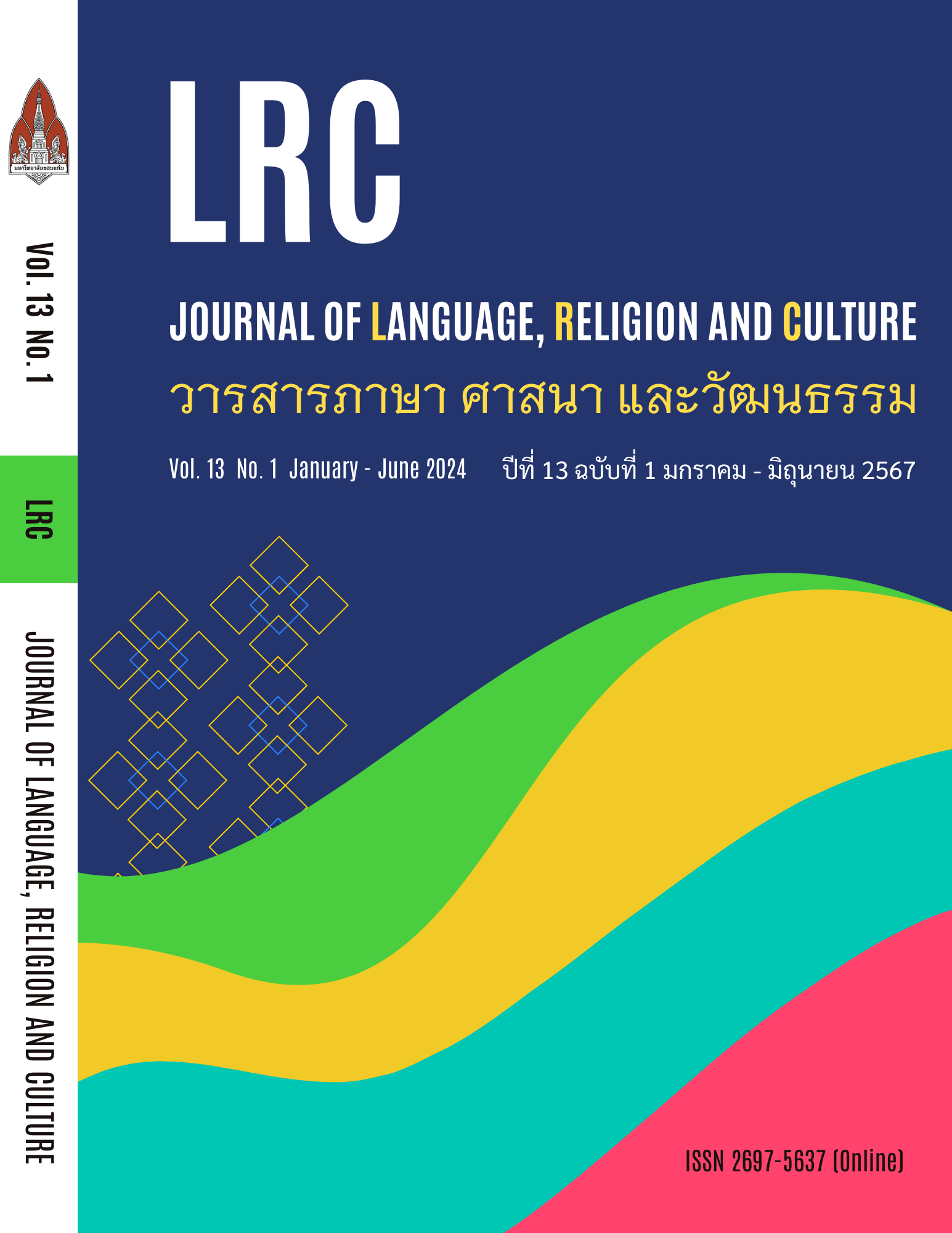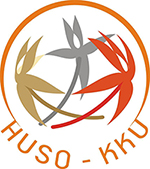การตั้งชื่อสถานที่ท่องเที่ยวของนครหังโจว มณฑลเจ้อเจียง ประเทศจีน
การตั้งชื่อสถานที่ท่องเที่ยวของนครหังโจว มณฑลเจ้อเจียง ประเทศจีน
คำสำคัญ:
ภูมินามสถานที่ท่องเที่ยว, การตั้งชื่อ, นครหังโจว, ประเทศจีนบทคัดย่อ
งานวิจัยเรื่องนี้มีวัตถุประสงค์เพื่อวิเคราะห์การตั้งชื่อและคุณค่าภูมินามสถานที่ท่องเที่ยวของนครหังโจว มณฑลเจ้อเจียง ประเทศจีน โดยมุ่งให้เกิดประโยชน์ต่อวงวิชาการด้านภาษาจีนกับการท่องเที่ยว งานวิจัยนี้ใช้วิธีวิจัยเชิงคุณภาพ มุ่งสังเคราะห์เอกสารข้อมูลชื่อสถานที่ท่องเที่ยวของนครหังโจว มณฑล เจ้อเจียง ประเทศจีน จำนวน 449 แห่ง วิเคราะห์ข้อมูลทางภาษาและคุณค่าของการตั้งชื่อสถานที่ นำเสนอผลการศึกษาโดยการพรรณนา ผลการศึกษาพบว่า (1) นครหังโจวมีแหล่งท่องเที่ยวธรรมชาติมากที่สุด จำนวนพยางค์เสียงที่ใช้ในการตั้งชื่อสถานที่ท่องเที่ยวปรากฏจำนวน 4 พยางค์เสียงมากที่สุด โครงสร้างคำที่ใช้ในการตั้งชื่อสถานที่ท่องเที่ยวปรากฏโครงสร้างคำขยาย-คำหลักมากที่สุด (2) คุณค่าของภูมินามสถานที่ท่องเที่ยวของนครหังโจวสะท้อนให้เห็นถึงลักษณะภูมิประเทศ พรรณไม้และสัตว์ โบราณวัตถุ ประวัติศาสตร์ ลักษณะเด่นของสถานที่นั้นๆ นิทานตำนาน วีรบุรุษประจำถิ่น วิถีชีวิตการประกอบอาชีพ ความเชื่อเรื่องของความเป็นสิริมงคล ศาสนา สภาพอากาศ กิจกรรม การสัมผัสต่อสถานที่ท่องเที่ยวนั้น ๆ จินตนาการของชาวจีน หน้าที่ของสถานที่ท่องเที่ยว กลุ่มบริษัทที่ลงทุนในกิจการนั้นๆ การท่องเที่ยวในสังคมสมัยใหม่ และการอุปลักษณ์
เอกสารอ้างอิง
Boonsiri Sukpromsun & Arthit Limpiyakorn. (2021). Toponym: Reflecting Muang Phayao. The
Journal of Spatial Innovation Development, 2(1), 88-94.
Chanika Prommas. (2022). Toponymy of Temples in the District of Mueang Nakhon Sawan,
Nakhon Sawan Province: Characteristics of Language Used in the Origin of Naming. Inthaninthaksin Journal Thaksin University, 17(1), 63-90.
Chen Mengjia. (1988). The Inscriptions on Oracle Bones from the Yin Ruin. Beijing: Zhonghua
Book Company.
Chen Qingshuo. (2004). The Origin and Meaning of the Chinese Folk Saying "Heaven Above,
Suzhou and Hangzhou Below". Xungen, 51-52.
Cheng Xixi. (2020). Research on the Use of Characters in Shanghai Place Names and Their
Linguistic and Cultural Significance. (Doctoral dissertation). Sichuan International
Studies University, Sichuan.
Duncan Light. (2014). Tourism and toponymy: commodifying and consuming place names.
Tourism Geographies, 16(1), 141-156.
General Administration of Quality Supervision, Inspection and Quarantine of the People's
Republic of China. (2003). GB/T 17775-2003 Classification and Evaluation of Quality
Grades for Tourist Areas (Spots), National Standards of the People's Republic of China.
Hangzhou Daily. (2019, July 9). Jiangnan is beautiful, and the most beautiful is Hangzhou.
Retrieved from http://www.hangzhou.gov.cn/art/2019/7/9/art_812262_35410650.html
Hangzhou Daily. (2020, November 18). After a renovation period of five months- Hangzhou
China Silk City has undergone a rejuvenation and upgrade. Retrieved from
http://www. hangzhou.gov.cn/art/2020/11/18/art_812262_59017917.html
Jaroenphong Wichai. (2022). A Study of The Indigenous Place Name and Local History in The
Folk Legend about Father-in-Law, Chong Dong. Suratthani Rajabhat Journal, 9(1), 24-39.
Jia Pan. (2011). Research on the Language and Culture of Kaifeng Place Names. (Master's
Degree Thesis). Henan University, Henan.
Khwanchanok Naijarun. (2017). Study of the value of Toponyms in MuangBangkhlang,
Sawankkhaloke District, Sukhothai Province. Journal of Humanities Faculty of Humanities Naresuan University, 14(1), 61-72.
Li Ke. (2022). Research on Digital Preservation Strategies for Cultural Heritage of Zhejiang
Place Names — A Case Study of Ningbo. Comparative Study of Cultural Innovation,
(13), 85-89.
Liu Meijuan. (2007). Analysis of Semantic Trends in Zhejiang Rural Place Names. Journal of
Lishui College, 29(6), 21-48.
Liu Zeling. (2013). Research on the Language and Culture of Linfen Place Names. (Master's
Degree Thesis). Shanxi Normal University, Shanxi.
Lv Yichun. (1994). Research on the Origin of Street and Alley Names in Hangzhou. Journal of
Hangzhou University, 24(4), 116-125.
Olan Rattanapakdee. (2009). The Values of Toponyms of Village Names in Nan Province.
University of the Thai Chamber of Commerce Journal Humanities and Social Sciences, 42(2), 82-96.
Olan Rattanapakdee & Wimolsiri Klinbubpa. (2010). Toponyms in Lamphun Province: Village
Names. Journal of Studies in the Field of Humanities Faculty of Humanities, Kasetsart University, 17(1), 58-84.
Phathanan Phapor. (2018). A Study of the Influence of Community of the Village Name of
Nasio Sub-District, Muang District, Chaiyaphum Province (Research Report). Chaiyaphum: Rajabhat Chaiyaphum University.
Petchsawas Kunkam. (2018). The Linking of Local Cultural Resources along the Chiang Rai-
Chiang saen Ancient Route. Panya Journal, 25(1), 40-50.
Paitoon Piyapakorn. (1994). Toponymy of Village in the Northeast of Thailand: Analyze the
Geographic Pattern of Generic names. Journal of Geography, 13(2), 17-30.
Qian Boquan. (1999). Origin and Meaning of Several Xinjiang Place Names. Geography and
Geographic Information Science, (2), 37-43.
Rangsan Chanta. (2015). The Indigenous Place Name in Local History and Folk Literature in
the Upper North. The Journal of Thai Lanna Wisdom, 10, 9-31.
Rattanadarun Maneenet, Boonyong Ketted & Kallaya Kulsuwan. (2016). The Language
Cultures for Designation of Ban Nam Maung Village; the Ethnic Groups of Khamar and Kuy in Dong Kam Med Sub-district, Khunkhan District, Sisaket Province. Humanities and Social Sciences Journal, Ubon Rachathani Rajabhat University, 7(2), 55-69.
Sansanee Saitip, Kochai Sarikbutr & Rangsan Chanta. (2016). Toponymy: Provenance, Meaning
and Identity of Village Names in Hang Dong District, Chiang Mai Province. Ganesha
Journal, 12(2), 43-51.
Sujaritlak Depadung. (2000). Village Names in Nakhon Pathom. Journal of Language and
Culture, 39(1), 51-75.
Tang Lei. (2017). Research on the Language and Culture of Chinese Place Names. (Doctoral
dissertation). Huazhong Normal University, Wuhan.
The People’s Government of Zhejiang Province. (n.d.). Hangzhou. Retrieved 10 June
,from https://www.zj.gov.cn
Wanwisa Khampikat. (2017). A Study of the Meaning and Value of Toponyms from Folktales
In Mae Tha District Community, Lamphun Province. (Master’s Thesis). Chiang Mai Rajabhat University, Chiang Mai.
Wang Bin, Huang Xiulian, Situ Shangji. (2012). Analysis of Linguistic, Cultural, Spatial Structure,
and Landscape Characteristics of Guangdong Place Names. Human Geography, 1(123),
-44.
Wang Ran. (2018). Research on the Language and Culture of Handan Place Names. (Master's
Degree Thesis). North Nationalities University, Neimenggu.
Wang Rong, Liu Ying, Xu Yiru. (2021). Research on the Construction of Theoretical Framework
for Tourism Place Name Studies. Resources and Environment in Arid Regions, 35(8),
-174.
Wuttinan Suporn et al. (2021). Toponymy through Chanthaburi's Local History a Case Study
of Chanthaburi's Chanthanimit Subdistrict, Thailand. Humanities and Social Sciences Nakhonsawan Rajabhat University Academic Journal, 8(2), 105-117.
Zhang Binhua, Wang Huanyu. (2005). The Syntactic Structure of Place Names in Yancheng.
Journal of Yancheng Institute of Technology, (3), 70-73.
Zhang Chaoya, Zhang Xiaolin, Li Hongbo. (2015). Research on the Evolution of Urban Road
Names from the Perspective of Urban Evolution: A Case Study of Nanjing City.
Geography and Geographic Information Science, 31(4), 83-88.
Zhang Yanlai. (2000). Linguistic Study of Beijing Place Names. (Master's Degree Thesis). Beijing
Language and Culture University, Beijing.
Zhejiang Provincial Department of Culture and Tourism. (2022, May 6). List of A-level Tourist
Attractions in Zhejiang Province. Retrieved 8 June 2022 ,from http://ct.zj.gov.cn/art/
/5/6/art_1643509_59010331.html
Zhong Zhiping. (1992). An Alternative Perspective on the Naming of Scenic Spots in China.
Journal of Gannan Normal University, (1), 75-79.
Zhou Yujie. (2015). Research on the Language and Culture of Yiwu Place Names. (Master's
Degree Thesis). Zhejiang Normal University, Zhejiang.
Zhu Dexi. (1984). Grammar Handbook (Reprint). Bejing: The Commercial Press.
ดาวน์โหลด
เผยแพร่แล้ว
รูปแบบการอ้างอิง
ฉบับ
ประเภทบทความ
สัญญาอนุญาต
ลิขสิทธิ์ (c) 2024 วารสารภาษา ศาสนา และวัฒนธรรม

อนุญาตภายใต้เงื่อนไข Creative Commons Attribution-NonCommercial-NoDerivatives 4.0 International License.







